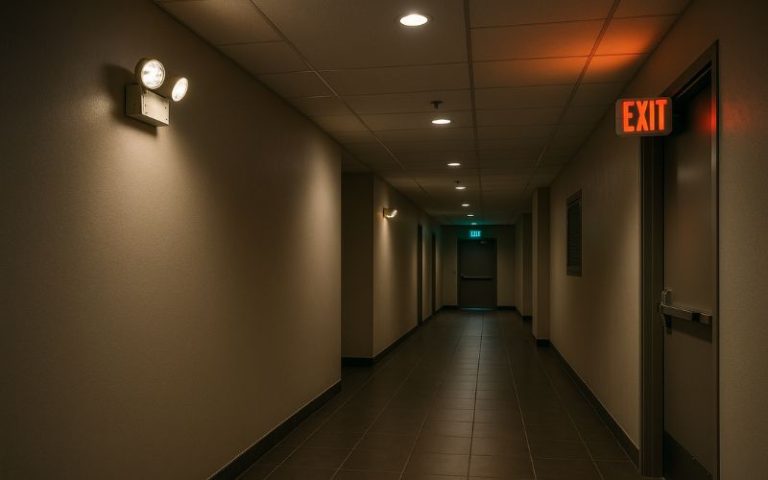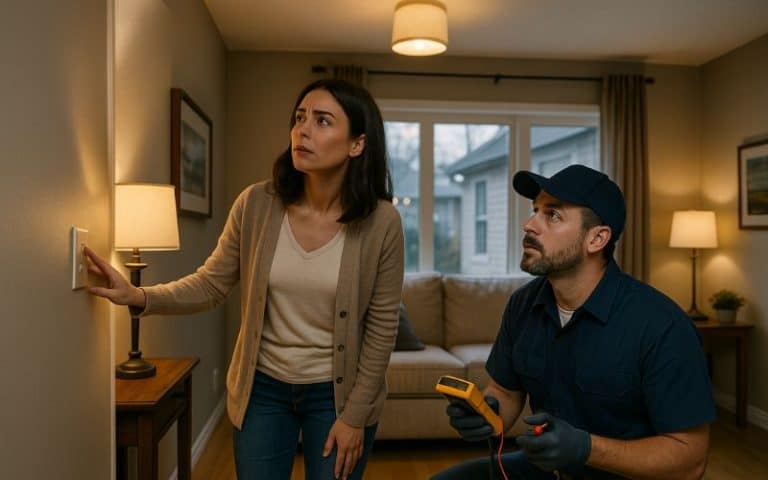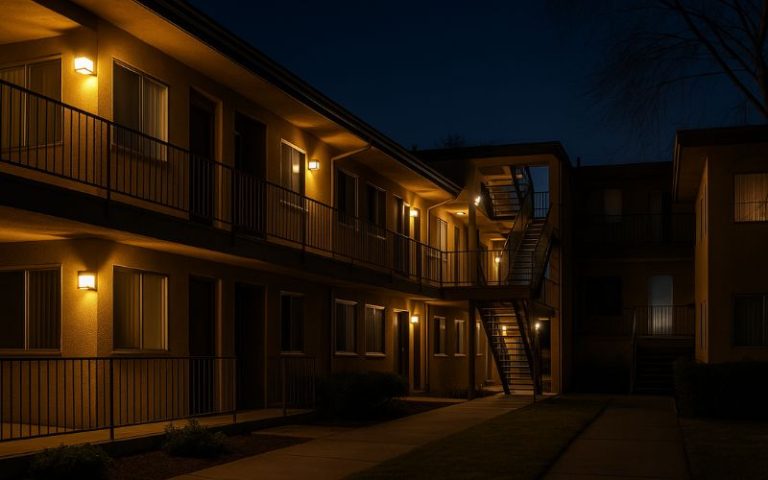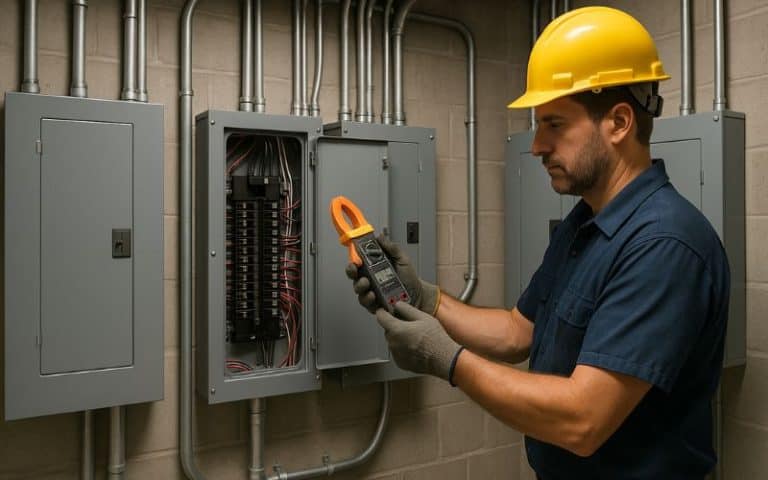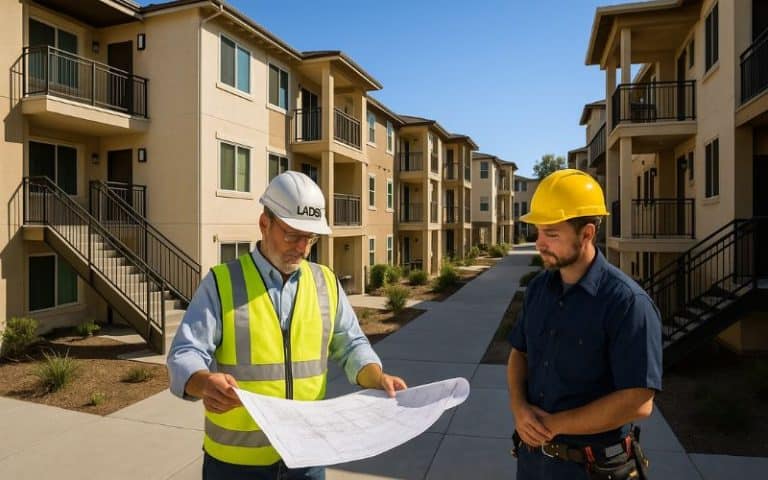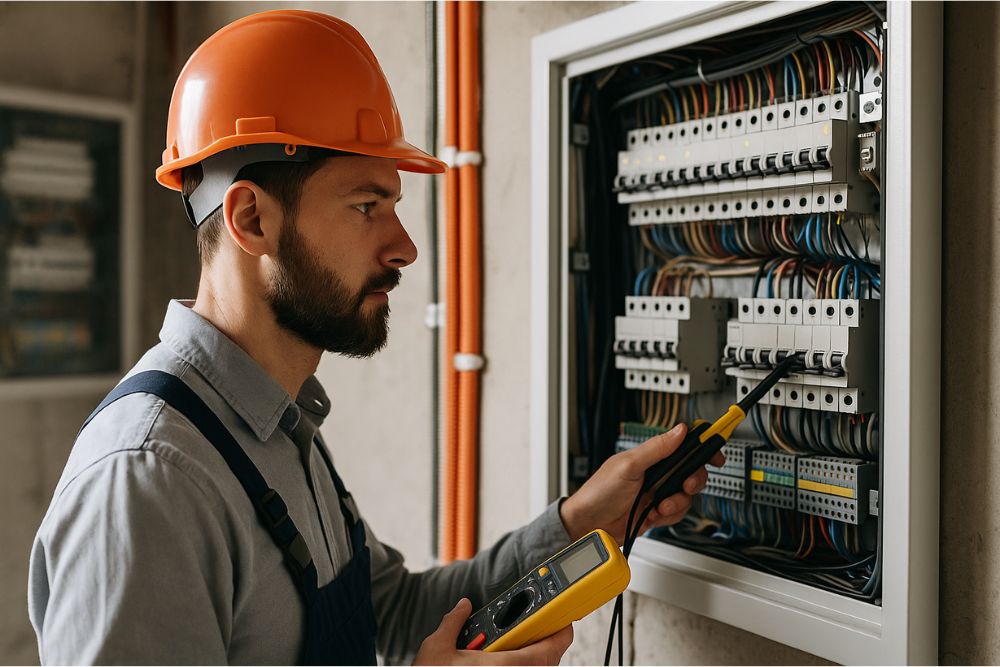
Routine Electrical Inspections: Your Best Defense Against Fire Risk and Code Violations
In the heart of Los Angeles, where buildings range from century-old apartment complexes to newly constructed high-rises, the risk of electrical hazards is real and ever-present. Aging infrastructure, rising energy demands, and evolving building codes all contribute to the urgent need for routine electrical inspections. These aren’t just bureaucratic checkboxes—they’re your first line of defense against fire risks, code violations, and liability.
For property managers, especially those overseeing multi-unit buildings, the stakes are high. An overlooked wiring issue or outdated panel can lead to costly repairs, displaced tenants, insurance complications, or worse—life-threatening fires. Regular inspections ensure your systems are not only safe and operational but also aligned with Los Angeles Department of Building and Safety (LADBS) regulations and National Electrical Code (NEC) standards.
Many property owners assume that if everything is “working,” there’s no reason to dig deeper. But electrical systems often degrade silently. Wiring insulation can dry out, circuits can become overloaded, and old breaker panels—especially brands like Zinsco or Federal Pacific—can fail to trip during surges. These problems rarely announce themselves until it’s too late. A proactive inspection uncovers them early and gives you a roadmap to fix issues before they escalate.
Key Components of a Comprehensive Electrical Inspection
A quality inspection doesn’t just glance over the surface. It dives deep into every aspect of your electrical infrastructure. At RG Electric, our licensed electricians take a systematic approach that includes:
1. Main Panel and Sub-Panel Evaluation
We inspect for heat damage, rust, corrosion, or improper labeling. If you have outdated brands, we’ll recommend safer, modern alternatives.
2. Circuit Load Analysis
We assess whether your breakers are appropriately sized for the devices they support. Overloaded circuits are a leading cause of fires.
3. Outlet and Switch Testing
Loose connections or worn-out components can cause arcing—a fire risk often hidden inside walls.
4. GFCI and AFCI Functionality Checks
These modern safety devices protect against shocks and fires. Missing or malfunctioning units need immediate replacement.
5. Wiring Integrity Review
We check for signs of aging insulation, exposed wires, and outdated aluminum wiring, which poses greater risks than copper.
6. Smoke Detector and Surge Protection Assessment
Properly functioning smoke detectors are critical for early fire detection. Surge protectors defend your property from voltage spikes.
This full-system review doesn’t just provide peace of mind—it delivers documentation that satisfies insurers, lenders, and code enforcement.
Common Hazards Found During LA Electrical Inspections
You might be surprised at what inspections regularly uncover in even “well-maintained” properties. Here are some of the most frequent issues:
Outdated Electrical Panels
Many Los Angeles buildings still use Zinsco, Federal Pacific, Pushmatic, or Challenger panels. These panels are notorious for failing under fault conditions, which can allow wires to overheat and start fires. Upgrading to a modern panel is not just a safety measure—it’s a compliance necessity.
Improperly Installed or Damaged Wiring
Quick-fix jobs and amateur installations often lead to exposed wiring, missing junction boxes, or reversed polarity. These problems can be dangerous and are usually hidden behind walls or ceilings.
Overloaded Circuits
As tenants use more high-powered devices, circuits designed decades ago may struggle to handle the load. This not only causes tripped breakers but can lead to overheating.
Missing or Non-Functional Safety Devices
Many units are missing Ground Fault Circuit Interrupters (GFCIs) in kitchens and bathrooms—now required by code. Others lack surge protectors entirely, leaving sensitive systems at risk.
Corrosion and Water Damage
Moisture intrusion—common in coastal areas—can rust panels and corrode wire terminals, creating high-resistance connections and fire hazards.
These are just a few examples. With routine inspections, you’ll know what to fix and prioritize upgrades before small issues become expensive emergencies.
Code Compliance: Protecting Your Property and Tenants
Electrical codes aren’t just red tape—they’re carefully developed, life-saving standards designed to prevent dangerous conditions before they occur. Every requirement is backed by decades of real-world data on electrical failures, fires, and injuries. Ignoring them doesn’t just put your property at risk—it puts lives at risk and opens the door to significant financial liability.
Non-compliance can lead to failed inspections, permit denials, expensive rework orders, insurance claim rejections, or even lawsuits in the aftermath of an electrical fire. For property managers in Los Angeles, the stakes are especially high. The city’s dense population, aging building stock, and increasingly strict safety regulations make it critical to keep your electrical systems in line with current code.
In Los Angeles, the Los Angeles Department of Building and Safety (LADBS) enforces strict adherence to the National Electrical Code (NEC) as well as local amendments. These requirements evolve regularly, meaning a building that passed inspection 10 years ago could now be out of compliance. Some key examples include:
- GFCI Protection – All bathroom, kitchen, garage, and exterior outlets must be Ground Fault Circuit Interrupter (GFCI) protected to prevent electric shock in wet or damp areas.
- Hard-Wired Smoke Alarms – Smoke alarms must be hard-wired and interconnected in all sleeping areas, ensuring every occupant is alerted in an emergency.
- Dedicated Appliance Circuits – HVAC units, microwaves, laundry appliances, and similar high-demand equipment require dedicated circuits to prevent overloads.
- Aluminum Wiring Requirements – Properties with older aluminum wiring must maintain or retrofit it to meet current safety standards, reducing the risk of overheating and fire.
Even seemingly minor violations—like missing GFCI outlets in a utility room or using outdated breaker panels—can halt renovation projects, delay tenant move-ins, or derail property sales.
Regular inspections from RG Electric ensure your property not only meets today’s code requirements but is prepared for upcoming changes. Our team provides detailed inspection reports that can be used to streamline permit applications, support insurance documentation, or satisfy lender requirements for financing.
Staying ahead of the curve means you’re not scrambling to fix violations after the fact—you’re preventing them altogether. That proactive approach keeps your property safe, compliant, and market-ready.
When to Schedule an Electrical Inspection
Timing is everything when it comes to electrical inspections. Waiting until there’s a visible problem—like flickering lights, tripped breakers, or a burning smell—can mean the damage is already done. The smartest property managers treat inspections as part of a proactive maintenance strategy, scheduling them at key moments in a building’s lifecycle to avoid costly surprises.
Some of the most critical times to bring in a licensed electrician include:
- Before Tenant Turnover – Vacant units provide a perfect window to assess wiring, outlets, lighting, and safety devices without disturbing occupants. This ensures new tenants move into a safe, code-compliant space and reduces liability if an issue arises later.
- Before or After Renovations – Renovation work, especially involving kitchens, bathrooms, or common areas, can introduce new electrical loads or require code upgrades. An inspection confirms all new wiring, panels, and devices are installed correctly and documented for permits.
- When Purchasing or Refinancing Property – No one wants to discover outdated panels, aluminum wiring, or major code violations after closing. A pre-purchase inspection protects your investment and strengthens your negotiating position. For refinancing, having a recent inspection report can reassure lenders and speed up the approval process.
- After a Power Outage or Equipment Failure – Outages and equipment breakdowns can cause hidden damage to wiring, breakers, and safety devices. An inspection identifies the root cause and ensures the problem won’t repeat—especially important in multi-unit buildings where one failure can affect dozens of tenants.
- Every 3–5 Years as Routine Maintenance – Even without visible problems, systems degrade over time. This is especially true in older buildings or those with high tenant turnover, where repeated appliance changes and DIY “fixes” can introduce hazards.
At RG Electric, we recommend creating an inspection calendar for your properties so checks happen automatically—before problems arise. For high-demand buildings or those with aging infrastructure, annual inspections may be the safest approach.
By scheduling inspections at the right times, property managers protect their tenants, preserve their investments, and avoid the stress and cost of emergency repairs. In a competitive Los Angeles rental and commercial market, that foresight can be the difference between smooth operations and disruptive, expensive downtime.
The RG Electric Advantage: Local Knowledge, Lasting Solutions
Choosing the right electrician in Los Angeles is about more than just finding someone who can “do the work.” You need a partner who understands the unique electrical challenges faced by property managers, building owners, and HOAs in a city with aging infrastructure, strict code enforcement, and rising tenant expectations.
At RG Electric, we specialize in commercial electrical services (Commercial Electrical Services in Los Angeles) and high-quality residential upgrades. Whether you manage a historic apartment building in Hollywood, a high-rise in Downtown LA, or a multi-unit complex in the Valley, our team brings decades of hands-on experience to every job.
When you partner with us, you get:
- Thorough, code-compliant inspections – We identify hazards before they become emergencies, ensuring compliance with both NEC and LADBS requirements.
- LADBS permitting expertise – From electrical panel services to circuit breaker upgrades, we handle the paperwork and inspections so your projects stay on schedule.
- Detailed, easy-to-read reports – We document every finding so you have a clear plan for repairs, upgrades, or preventive maintenance.
- Transparent pricing and scheduling – No surprise charges. No vague timelines. Just reliable, professional service.
- Long-term safety and efficiency planning – We work with you to map out future upgrades like whole-house surge protection or EV charger installations so you can budget smart and stay competitive.
Our mission is simple: to help Los Angeles property owners protect their investments, reduce liability, and improve tenant satisfaction through proactive, high-quality electrical service.
Whether you need a one-time inspection or a long-term electrical maintenance partner, RG Electric is ready to help you create a safer, more compliant property—without costly surprises down the road.
Ready for an Inspection? Let’s Talk
If you haven’t had an electrical inspection in the past three years—or if you’re unsure when the last one occurred—it’s time to act. Inspections are one of the most affordable, high-impact steps you can take as a property manager.
Don’t wait for a tenant complaint or a failed permit inspection. Contact RG Electric today to schedule your electrical inspection. Use the form on our site or call us directly at (323) 521-5131.
You can’t fix what you can’t see—but with RG Electric, you don’t have to see it to prevent it.


